With apologies to John Muir, who wrote an excellent book of the same name, my mechanic Dave and I are engaged, it seems, in a wordless project to keep my 2000 Volkswagen Jetta alive.
We are aided in this effort by the relatively low mileage on the car – just over 105,000 kilometers in 17 years. And by Dave’s gung-ho attitude and our joint sense of wonder that the car is still on the road all these years later.
This month saw two episodes that threatened to derail this project.
First, a problem I started to notice a few weeks ago after driving back from supper in Victoria by the Sea. The car, especially when it was hot, and when I was driving slowly, was making sounds that sounded like an old iron bed squeaking, especially when I turned the wheel.
I dropped the car into Dave on Wednesday last and he found that solving this issue was as simple as replacing one of the ball joints. $142 later, no more bed-squeak and an almost-good-as-new car.
Second, a problem that’s come and gone a couple of times over the last month: activating the right-hand turn signal would cause the signal to flash at about two times the regular rate.
Reading various online sources suggested the problem could be the hazard switch on the console, which also serves as the relay for the turn signals.
I dropped by Brown’s VW on Monday to see if I could get a replacement, but they had none in stock and would have to order the part. For $32.
Before I placed the order, I decided to check at what we used to call Livingstone’s but now apparently call Island Auto Salvage, out by the airport.
They didn’t have anything immediately available, but suggested I check next door at the Brackley U-Pick.
I’d driven by the Brackley U-Pick sign a thousand times over the years and always assumed it was a strawberry operation.
It is not.
It’s a DIY auto salvage yard. You go out into the graveyard of automobiles, find your brand’s section, and scavenge for parts.
In other words, one of the greatest places you could imagine for a curious person.
And a place I was, memories of my Dad taking me similar places dancing in my head, proud to be able to take Oliver.

So we headed over, got the lay of the VW land from the guy behind the desk, and headed out to “halfway back on the left” where we found a selection of Volkswagen Jettas, Passats, Beetles and Golfs. Besides being ripe pickings for our needs, these cars, most of them bashed or banged or otherwise destroyed, served as a bracing reminder for the fragility of the automobile.
We found a couple of millennial Jettas with intact consoles and found that the hazard switch easily popped out of both.
Back at the office to pay, the chap suggested I might want to try them out first, which I thought a helpful gesture, and took him up on it.
Back at the Jetta I popped out our seemingly-defective switch and popped in one of those from the yard. Tried the turn signal. Still crazy-fast. Tried the other one from the yard. Still crazy-fast.
So it wasn’t the hazard switch relay.
Back to the yard. The web suggested the other reason might be a dead or dying turn signal bulb, so, after putting the relays back in place (so that others following could find them), we located a Jetta with a similar headlamp assembly and popped out the bulb.
Back at the office I was charged $1 for the bulb, and off we went home.
Back at home I found that accessing the bulb was trickier than it had been in the yard; YouTube came to the rescue, though, with this helpful video, and 5 minutes later I had the replacement bulb in place.
And that fixed the problem.
So, for $1 and an interesting amble through the car graveyard, we’re back in business.
2020 here we come!
I completed the principal printing for my contribution to the Sonnets 2016 project on the weekend. I reasoned that, given that the words are to be crammed up inside a library catalogue drawer together soon, they needed to air out in the sunlight, so I filled every last corner of the office floor with drying words.
Next step: sort everything into sonnet-wise order. Like Twister, but with Whence and Thou.
And endless are the modes of speech, and far
Extends from side to side the field of words.
– The Iliad of Homer: Translated Into English Blank Verse
William Cullen Bryant
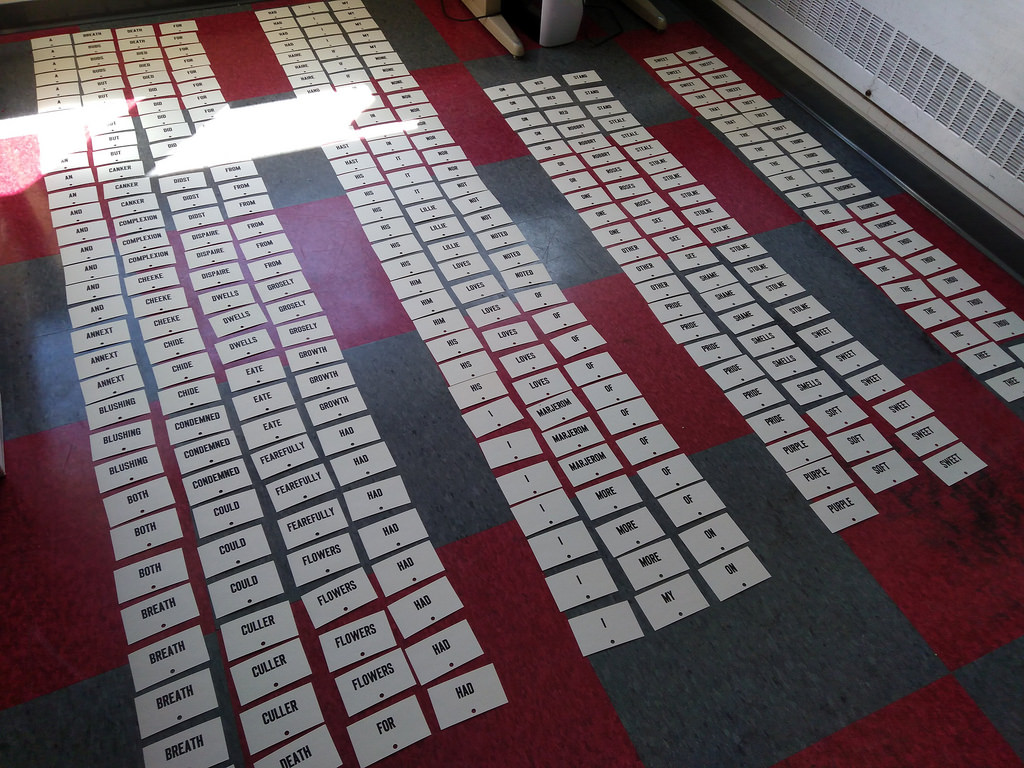
I mentioned yesterday that I’d been able to find a detailed floor plan of Colonel Gray High School in the school inspection report that resulted from the 2010 identification of mould and moisture problems in Prince Edward Island schools.
The collection of inspection reports was originally posted online on the Department of Education’s website, but although the files remain online, the index that pointed to them has since gone dark.
To ensure that these reports continue to be available – both for their inspection reports and, most importantly for my purposes, for their helpful cache of school floor plans – I’ve mirrored them, with the help of the Internet Archive of the site, to a standalone archive of their own.
My habit regarding OpenStreetMap edits is to dive into improving the map for places that are new to me. After ignoring Colonel Gray Senior High School since we moved to Charlottetown 23 years ago, it’s now [[Oliver]]’s school, and so a big part of my life. So time for some edits.
Fortunately for the casual school-mapper, there are useful PDF building plans of every school – the result of the mould-moisture reports prepared in 2011 – and so I was able to use the floor plans in the PDF to make the rendering of the school in OpenStreetMap much more geographically accurate. I didn’t give it the full OSM indoor treatment, but the footprint of the building is now much better.
Here’s an animated visualization of the “before” and the “after”. Notice I even added the trees!
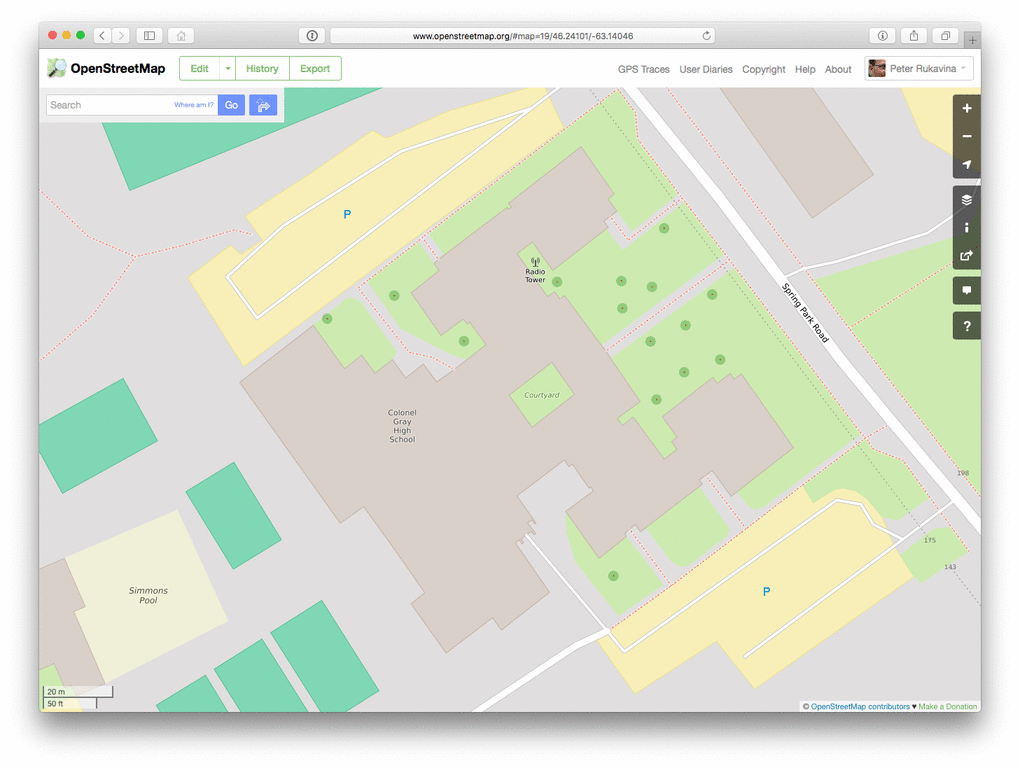
[[Oliver]] started grade 10 at Colonel Gray High School today, his first year of high school, and the first of his last three years in the public school system. As we have every day since kindergarten, we walked to school together; the new walk is about twice the length of the old walk, to Birchwood, which can only mean good things for my physical fitness. Figuring 4 km a school day for 3 years, that’s about 500 km of walking left to go until public school is done.
Grade Ten, 2016
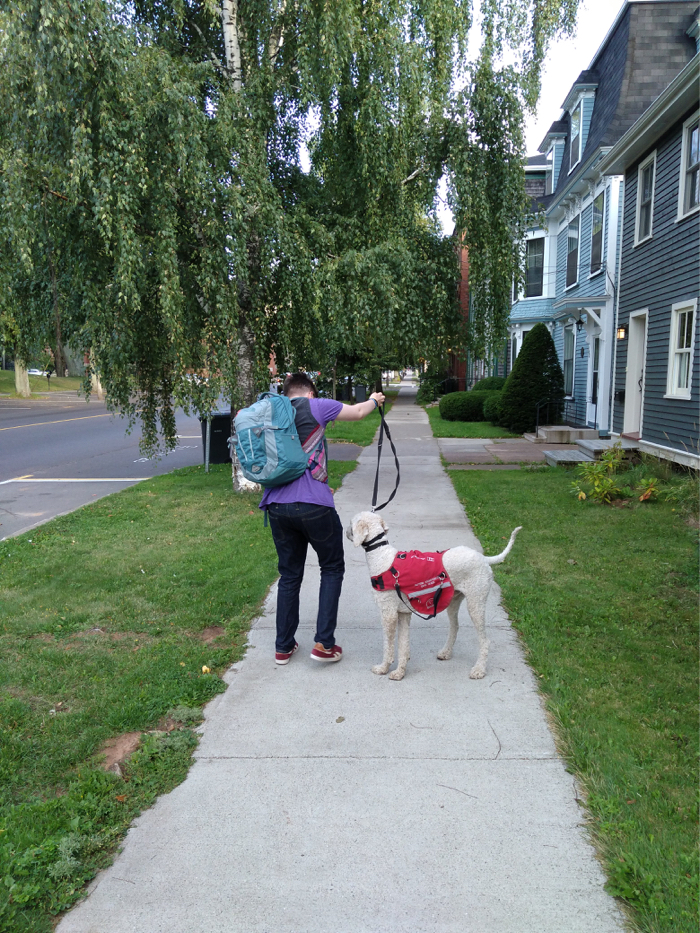
Grade Nine, 2015

Grade Eight, 2014

Grade Seven, 2013
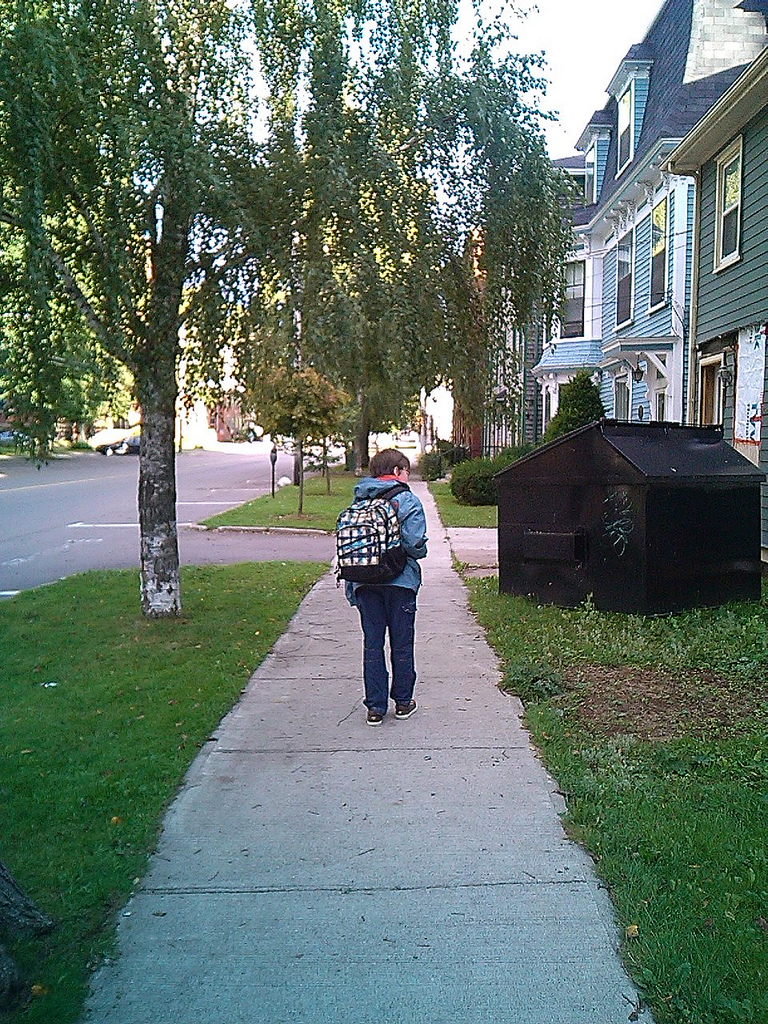
Grade Six, 2012
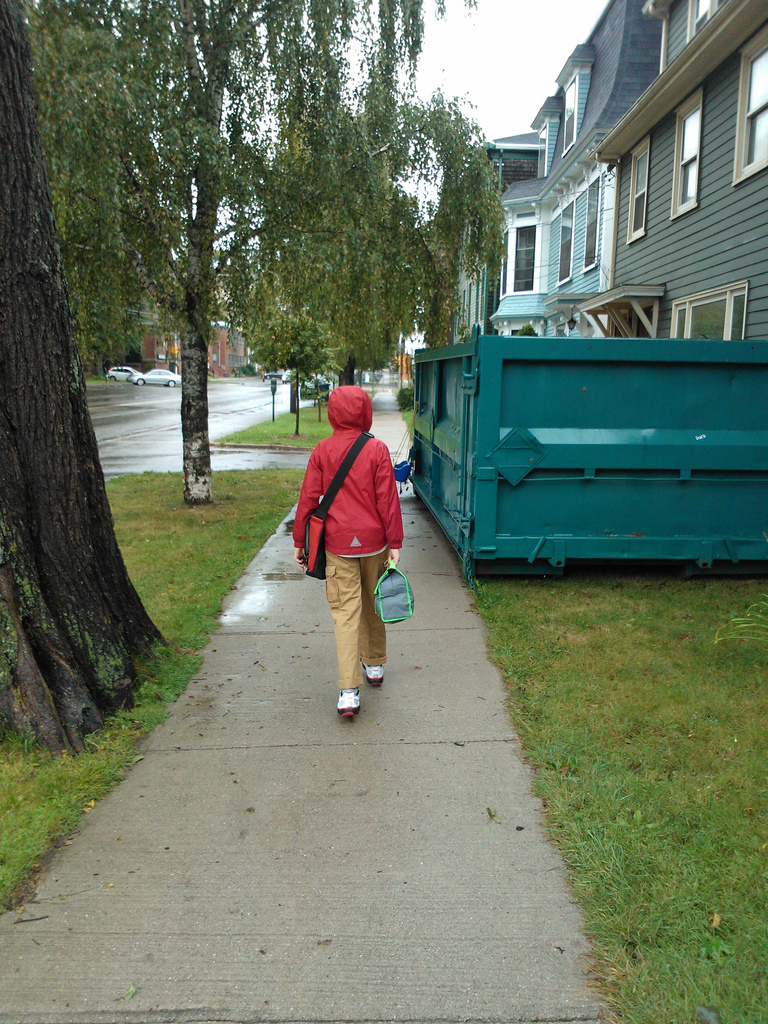
Grade Five, 2011
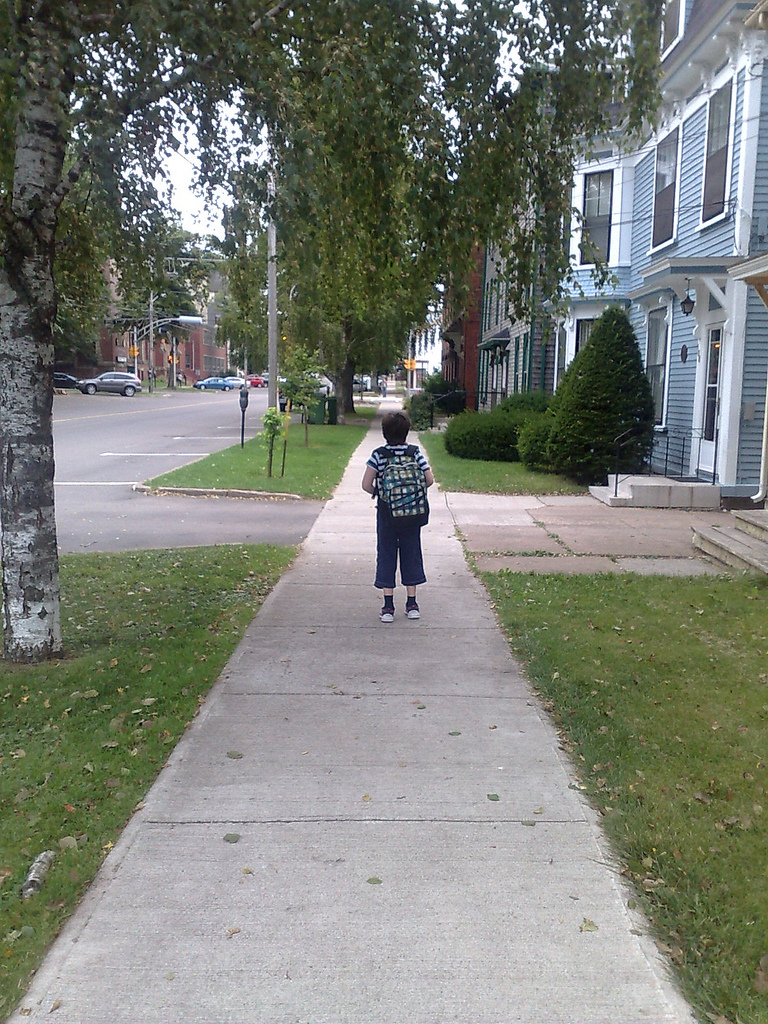
Grade One, 2007
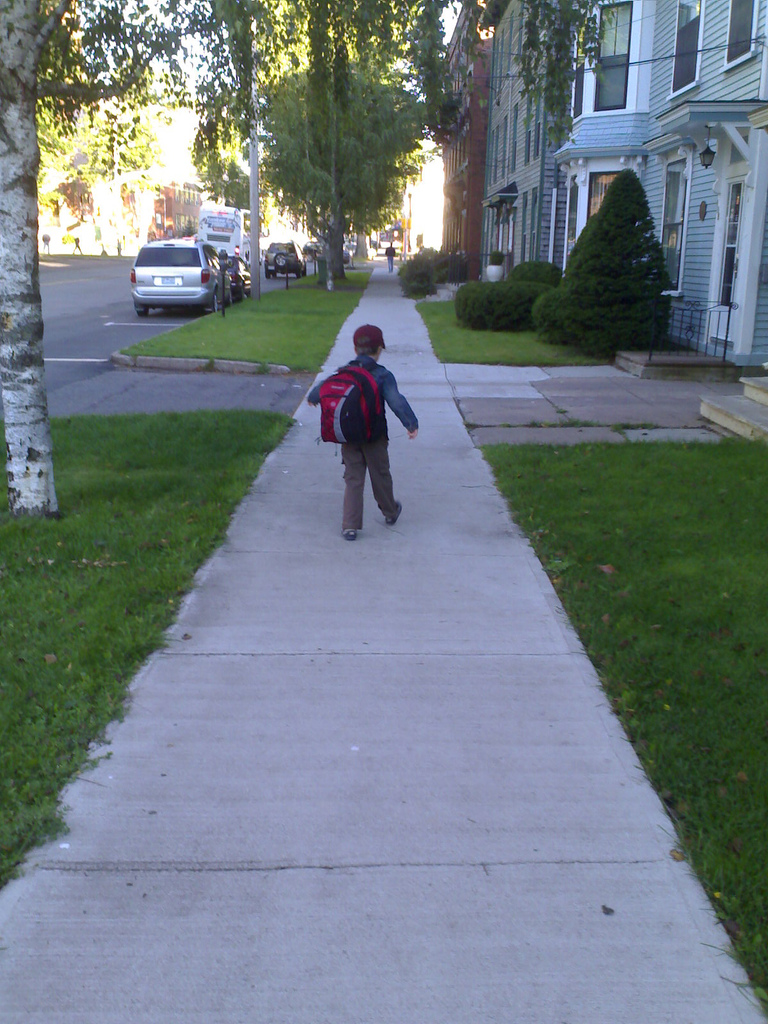
I’m scheduled to make a presentation on open data to the Governance and Appeals Committee of the University of Prince Edward Island Board of Governors on Tuesday. The committee is interested in the same sort of “cook’s tour of open data” that I presented to many groups inside and outside of government over the last two years, and I was happy to oblige.
I’ve taken the opportunity to reconsider some of my earlier thinking, which has focused primarily on open data as a technical or logistical challenge — “PDFs are where data goes to die,” etc. – and to confront some of what might be called the “spiritual impediments” to open data: what is it about institutions that results in a less-than-full-throated embrace of open data, and is it worth pursuing an open data strategy until that can be considered and the reasons confronted?
Here’s the slide deck I’ll present from. And here’s a PDF of the same slides.
[[Oliver]] and I spent a lot of time today talking about an app that could be used to make your life easier by doing things like deciding what restaurant to go to, or deciding what to order once you’re there. He came up with the name “EasyLife” and we recorded a little podcast, while swinging in the hammock at the Gardens of Hope, on the topic.
Few people have been as selflessly helpful to me in recent years as Gerry Hopkirk has.
I first met Gerry when he facilitated a planning session for the L.M. Montgomery Land Trust. He took us through an exercise that, in less-skilled hands, would have been pointless dotmocracy, but that, with Gerry’s care and attention, became a seminal moment along the organization’s path.
More recently Gerry has facilitated meetings and workshops for the PEI Home and School Federation, and the result has universally been deeper engagement, better insights, and greater, more inclusive participation.
Gerry knows how to bring people together, how to set effective scenes, how to use process tropes effectively.
So if having Gerry on board makes any meeting better, what do we do about the fact that there’s only one Gerry?
We make more Gerry!
I’m happy to report that the PEI Home and School Federation has launched the Dr. Helen MacDonald Collaboration and Facilitation Scholarship, a project to pay the full tuition for a member of the home and school community on Prince Edward Island to obtain a Collaborative Leadership and Facilitation Certificate from the University of Prince Edward Island this fall. The course is facilitated by Gerry himself, along with Paula Gallant. The recipient of the scholarship must agree to “pay it forward” by offering 20 hours of leadership and facilitation services to the PEI Home and School Federation and local home & school associations over the 2016-2017 school year.
Dr. Helen MacDonald was the founding President of the PEI Home and School Federation, and I’m so glad we have this opportunity to honour her, an idea that started back at the beginning of the summer when I met her son David at the Charlottetown Farmer’s Market.
Please spread the word about this scholarship: any member of a home & school association in an Island school is welcome to apply, which means any parent, guardian, teacher, administrator or staff person. Send them to http://peihsf.ca/scholarship for details.
I am frequently infuriated by the lack of attention paid by event organizers to creating events that are inclusive to all. While I recognize that event-making is complicated and that event staff are often strapped for time, energy and resources, it’s seems like a tragic waste to place so much effort into logistics without paying careful attention to ensuring as wide and diverse an audience as possible.
In this spirit, I present Pete’s Design Patterns for Welcoming Events, a short and incomplete checklist that I’d like events to go through, during their planning and execution, to work against this tendency.
- Reach Non-English Speakers. Not everyone speaks or reads English. And even more people don’t regularly consume the English-only media that you do. I ran into friends on Saturday, for example, who are longtime Charlottetown residents but who’d never heard of Art in the Open because they don’t read or listen to the English-language media.
- Clearly Publish your Age Restrictions. We once drove all the way to Summerside for a Lennie Gallant concert at the Silver Fox Curling Club only to find that we couldn’t attend because it was restricted to people 19 years old and over (even though they’d happily sold us a child’s ticket). If for some reason you cannot avoid age restrictions, please be up front and clear about them.
- Clearly Publish your Venue Accessibility. Ideally all events should be accessible to everyone, but if they are not, the least you can do is to clearly publish information about what’s accessible and what’s not. Include information about parking, stairs or other barriers, seating, audio system, and washrooms. The federal government has a useful accessible meeting-planners guide that’s just as useful for event planners. You should also consider joining the Access 2 program that provides free admission for an attendant for those who would benefit from it.
- Publish your Schedule as Open Data. If there was ever a pool of information that cries out for uniformity, it’s information about events, especially multi-day, multi-venue events. And yet schedule data is often published at the last minute, in non-standard formats and, all-too-frequently, is published as a collection of graphic images that cannot even be read by screen readers. There are lots of free online tools that allow you to publish schedule data in a form that others can integrate into their digital lifestyles (Google Calendar is but one). Here’s an example. Here’s another.
- Be welcoming. This is the least concrete of my patterns, but it’s arguably the most important. It’s likely that, no matter the nature of your event, lots of people carry around biases that would prevent them from attending or, if they do attend, from feeling comfortable. I’ve never been to a burlesque show, for example, because I’m afraid I’d be freaked out by, well, whatever I think goes on at burlesque shows. But I probably should go to a burlesque show, and all it might take to get me in the door would be a sentence or two in the marketing making it clear that everyone’s welcome, and someone at the door to say hello. My friend Luisa organizes a whole conference on this every year, but the basics are simple: be human, confront your assumptions, be absurdly open and welcoming.
Do those five things and you’ll open your events up to a much wider audience. You’ll be happier. I’ll be happier. And the people who wouldn’t have seen what you’re up to otherwise will be happier.
(Feel free to add to this list in the comments).
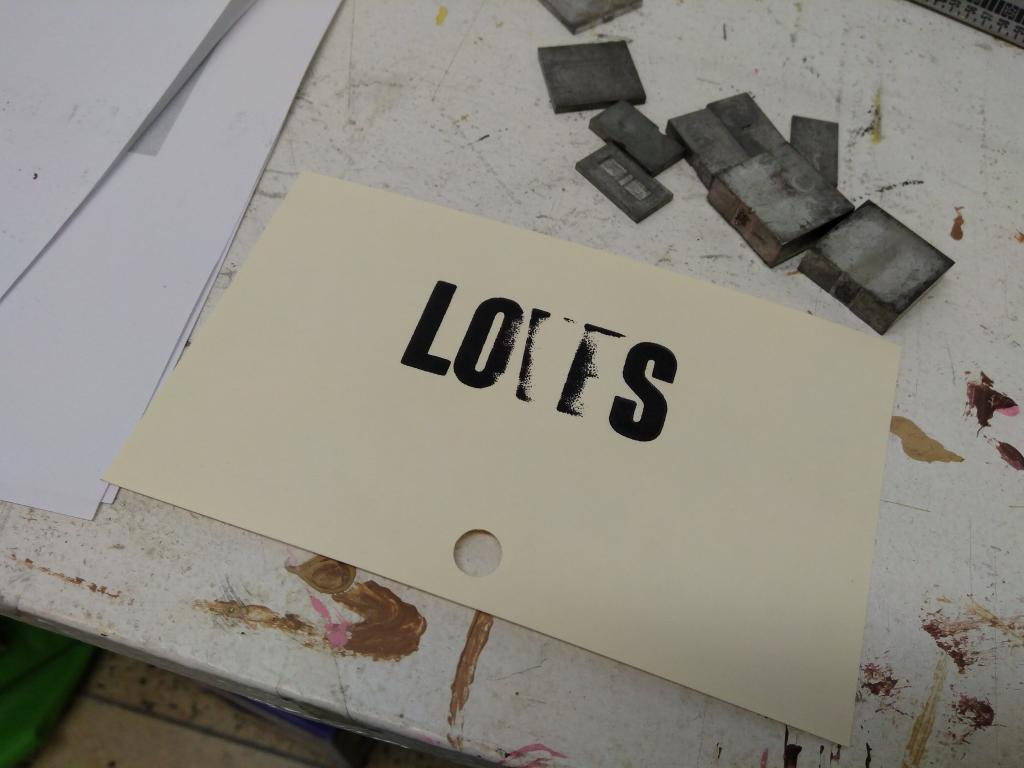
 I am
I am